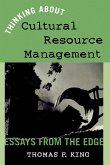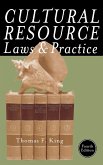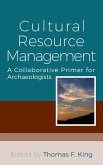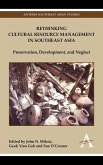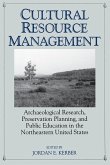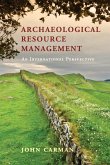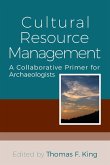Thinking About Cultural Resource Management: Essays from the Edge...includes thoughtful articles on a wide range of topics including meaningful consultation with Native People and biases among archaeologists. Sacred Sites Newsletter, Vol. 13.1 (Fall 2002) King's critical voice is indeed a refreshing retort to the uncritical literature that frequently appears in cultural resource management and historic preservation policy publications...King's rebukes encourage a new line of thinking about CRM: a much more critical understanding of the regulations that govern our work and the fragmented sources of power that often lie behind it. -- Kirk E. Ranzetta Vernacular Architecture Newsletter, No. 97, Fall 2003 A substantial contribution to American historical and archaeological resources at both intellectual and hands-on levels...a worthy enterprise...I can commend this to anybody in CRM domains...happily and strongly recommend[ed] -- Bruce Rippeteau, University of South Carolina American Antiquity, Vol. 69, No. 1, 2004 This book is...interesting in providing a context for the growth of the heritage industry...the underpinning issues are highly relevant...the book should be compulsory reading for heritage professionals, both within and outside government agencies. -- Michael Pearson, University of Canberra Historic Environment, Vol. 17, No. 2, 2003 This book contains the same rational, articulate and pointed critique of CRM laws and their implementation that we have come to expect and enjoy from King...I strongly recommend this book to anyone involved in cultural resource management and believe it should be a fundamental teaching tool for university courses. -- Kurt E. Dongoske, (Zuni Cultural Resource Enterprise) Kiva, Vol. 69, Nr. 4, Summer 2004 I promise you a great read, lots of opportunities to live inside of Tom King's head for a little while and find out exactly what a cosmic, marvelously contentious and critically important thought space that really is. Anyone who is on the consulting or receiving end of CRM practice should see this book as a must-read. It is not a primer on process, but rather a sequence of considerations on the 'why'-ness of it all, and how we as a national community have more, or less, managed our collective cultural affairs...you will get high humor in the midst of the dandy diatribes. -- Deborah Morse-Kahn Regional Research Associates, Director, Regional Research Associates King effectively provoked me into a critical evaluation of what we are trying to accomplish with CRM. I recommend this volume as food for thougt to CRM practitioners, government regulators and teachers of CRM practice at universities and colleges. -- L.J. (Butch) Amundson, (Stantec Consulting Ltd., Saskatoon, Saskatchewan) Canadian Journal Of Archaeology Few individuals are better placed to provide sage advice and observation about the current state of CRM practice than King. -- Erik Nordberg Industrial Archeology, Vol. 28, No. 2, 2002
Bitte wählen Sie Ihr Anliegen aus.
Rechnungen
Retourenschein anfordern
Bestellstatus
Storno



